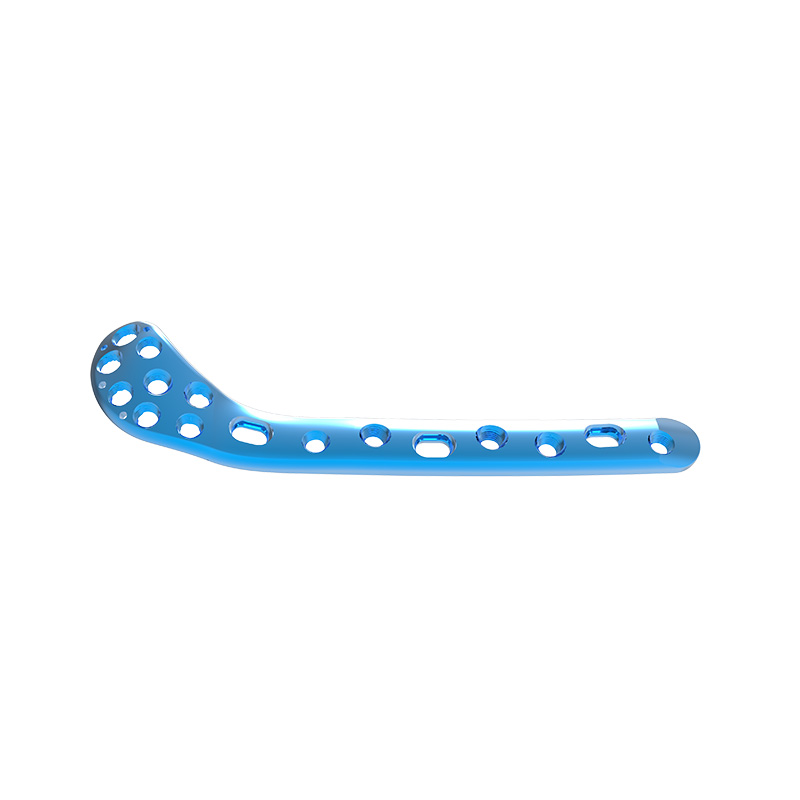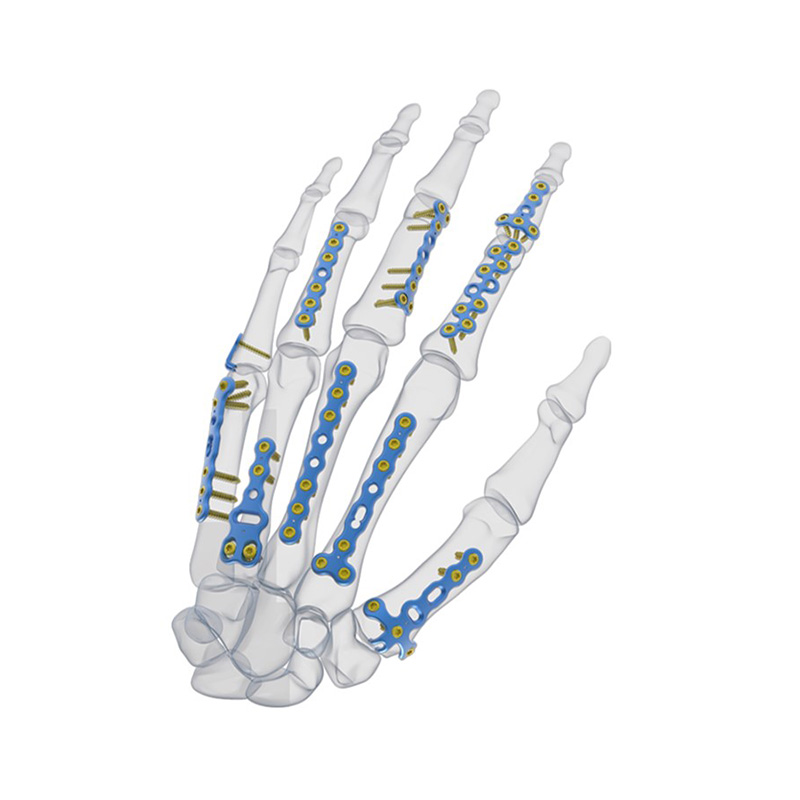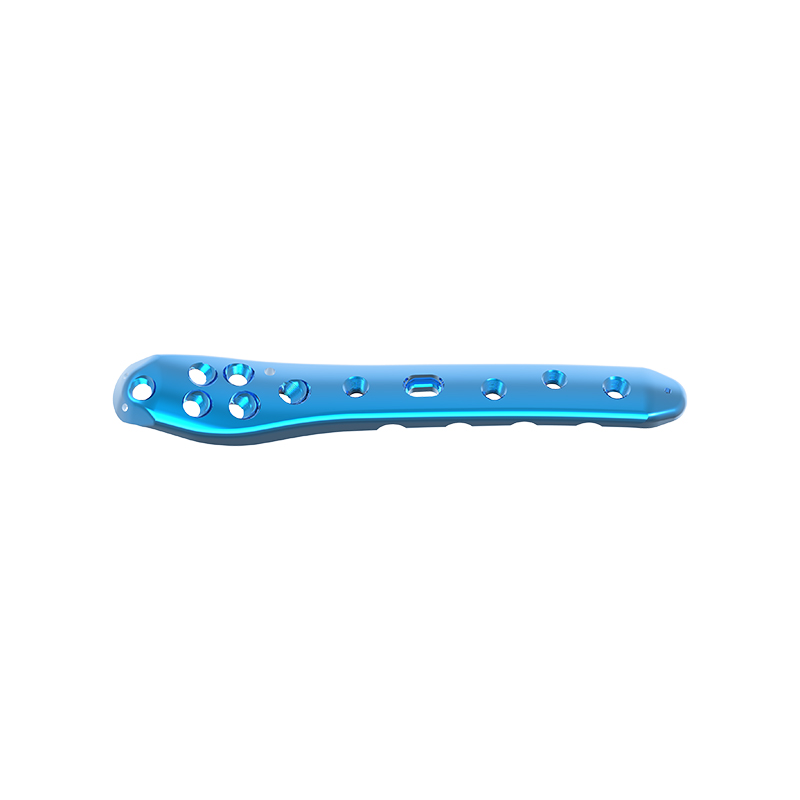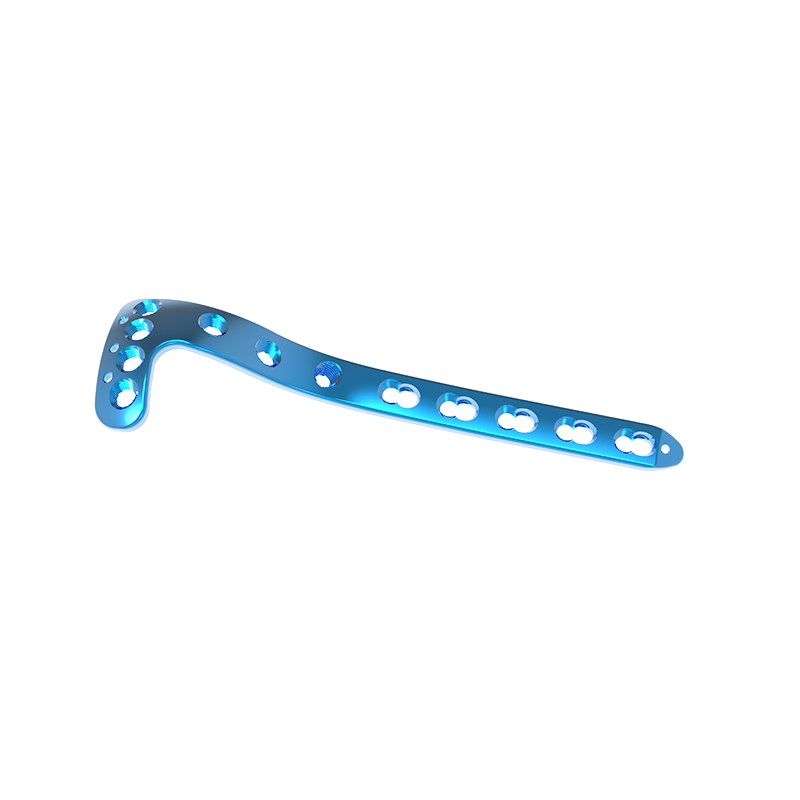Distal Medial Femur Locking Compression Plate
Product Features
Tapered, rounded plate tip facilities a minimally invasive surgical technique.
The anatomical shape of the head of the plate matches the shape of the distal femur.
2.0mm K-wire holes aid plate positioning.

3.The long slots allow bi-directional compression.

Indications
Displaced fracture
Intra-articular fracture
Periprosthetic fracture with osteoporotic bone
Nonunion
Product Details
| Distal Medial Femur Locking Compression Plate | 4 holes x 121mm (Left) |
| 7 holes x 169mm (Left) | |
| 4 holes x 121mm (Right) | |
| 7 holes x 169mm (Right) | |
| Width | 17.0mm |
| Thickness | 4.5mm |
| Matching Screw | 5.0 Locking Screw / 4.5 Cortical Screw / 6.5 Cancellous Screw |
| Material | Titanium |
| Surface Treatment | Micro-arc Oxidation |
| Qualification | CE/ISO13485/NMPA |
| Package | Sterile Packaging 1pcs/package |
| MOQ | 1 Pcs |
| Supply Ability | 1000+Pieces per Month |
The Distal Medial Femur Locking Compression Plate (LCP) offers several advantages for the treatment of fractures or other injuries in the distal medial femur. Here are some of the key advantages of using this plate:Stable fixation: The LCP provides stable fixation of the fractured bone fragments, allowing for optimal healing and alignment. The locking screws in the plate create a rigid construct, which provides better stability compared to traditional non-locking plate fixation techniques.Increased resistance to angular and rotational forces: The locking mechanism of the plate prevents screw back out and enhances resistance to angular and rotational forces, reducing the risk of implant failure or loss of fixation.Preserves blood supply: The design of the plate minimizes disruption to the blood supply to the fractured bone, helping to preserve the vitality of the bone and promote proper healing.Anatomical contouring: The plate is anatomically contoured to fit the shape of the distal medial femur, reducing the need for excessive bending or contouring during surgery. This helps to minimize soft tissue damage and improve overall surgical outcomes.Improved load distribution: The locking screws distribute the load across the plate and bone interface, reducing stress concentration at the fracture site. This can help prevent complications such as implant failure, nonunion, or malunion.Minimal soft tissue dissection: The plate is designed to allow for minimal soft tissue dissection during surgery, reducing the risk of wound complications and facilitating faster recovery.Versatility: The Distal Medial Femur LCP comes in a variety of sizes and configurations, allowing the surgeon to choose the most appropriate plate based on the specific fracture pattern and patient anatomy. This versatility improves surgical precision and outcomes.It's important to note that while the Distal Medial Femur LCP offers several advantages, the choice of implant ultimately depends on the individual patient, the specific fracture characteristics, and the surgeon's expertise. Your orthopedic surgeon will assess your condition and discuss the most appropriate treatment options for you.








